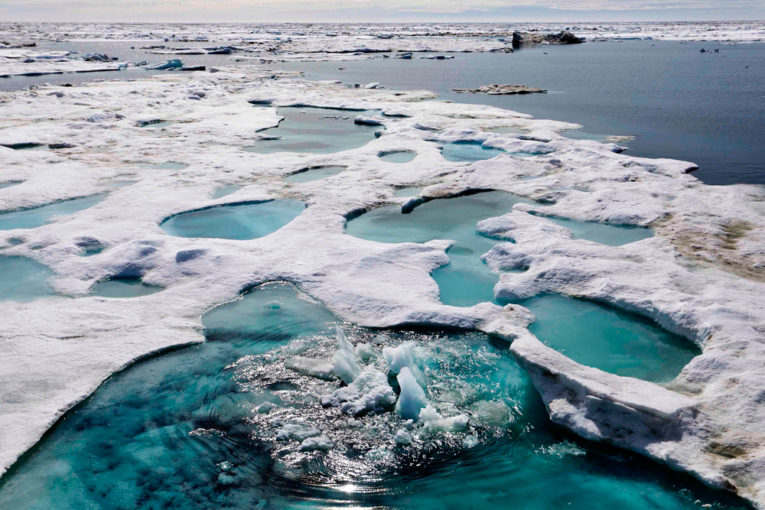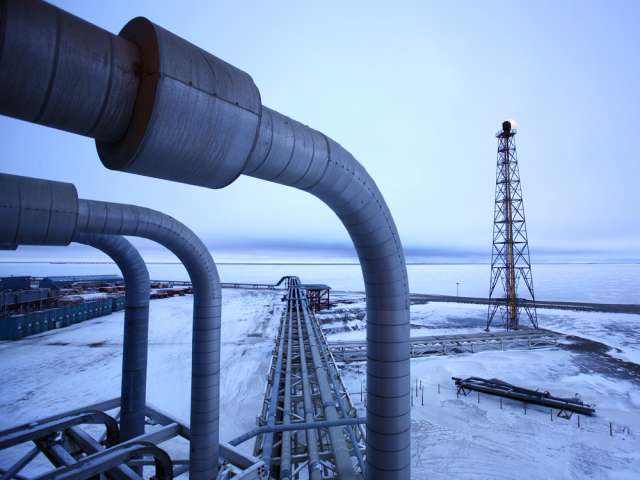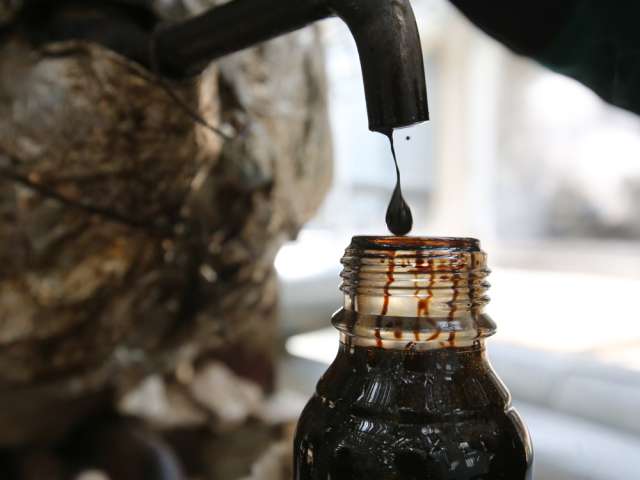
The following is part two of Northern Exposure, a three-part series that examines how a warming Arctic opens up the Northwest Passage and economic opportunities, but also creates headaches.
The 49-hour drive from FortisBC’s liquefied natural gas facility in Delta, British Columbia to Inuvik, Northwest Territories is not for the faint of heart as it winds through mountain passes and frequent avalanche zones.
Despite the 3,615-kilometre of distance and risks, trucks carrying liquefied natural gas from southern B.C. routinely make the arduous trip to supply the 3,000-person Inuvik, an Arctic outpost close to the Beaufort Sea, with fuel for power generation.
An increasing number of remote communities in Canada’s northern region are using LNG as a power source as it’s cheaper and less emissions’ intensive than diesel, which is still widely used.
In the eyes of the Northwest Territories government and the energy industry, it’s painfully ironic that the Beaufort Sea contains an estimated 56 trillion cubic feet of natural gas and 8 billion barrels of oil while remote communities such as Inuvik, Iqaluit and many more rely on LNG or diesel shipped in from southern Canada for power.
“We’re trucking LNG all the way from Delta to burn it in Inuvik,” Northwest Territories premier Bob McLeod said, calling the situation a missed opportunity.
Inuvialuit Regional Corp. chair Duane Smith has in recent months called for development in the Beaufort Sea so that Inuvik and nearby Tuktoyaktuk could generate their own gas-fired power, rather than importing it all the way from southern B.C.
The IRC has done a feasibility study on drilling wells in the region and Smith has said a few wells show potential.
Overall, onshore and offshore oil and gas development in Canada’s North has come to a complete standstill in recent years thanks in part to the fall in oil prices and abundant supplies in less expensive regions like Alberta and B.C. A federal moratorium on new offshore licences in the Arctic in 2016 has ensured that drilling activity in the region has all but ceased.
Jessica Shadian, the president and CEO of Arctic 360 and a professor at the Munk School of Global Affairs at the University of Toronto, said there is some resentment in the territories that part of Ottawa’s response to climate change has attempted to put the North “in a snow globe” so that “a bunch of people in southern Canada can feel good about it.”
Shadian’s group is attempting to educate investors and Bay Street banks of the economic opportunities in Northern Canada, which she says are massive.
“You have to understand Alaska, Canada and Greenland as an emerging economy,” she said. At the moment, however, “Bay Street knows nothing about the Arctic.”
Bay Street knows nothing about the Arctic
Jessica Shadian, CEO Arctic 360
Further, she said institutional investors would not fund projects in Canada’s territories — despite the opportunities there — until the federal government adopts a long-term view for territorial economic development, including energy development.
“We do not have a long-term strategy,” Shadian said of Ottawa’s approach. “I would not say that the federal government thinks about its north as an economic opportunity and as something that it should be paying attention to and investing in for the long-term future of Canada.”
The state of inactivity in Canada’s Arctic is an outlier as the United States tries to encourage companies to resume exploring offshore Alaska, and as other Arctic countries such as Russia and Norway are actively developing their northern frontiers despite concerns about climate change and melting sea ice.
“We go to other countries and the Arctic is kind of their economic generator. We’re optimistic of where we’ll end up,” N.W.T.’s McLeod said.
McLeod is hopeful energy investments will return to his territory in the coming years, especially since Ottawa has agreed to restart negotiations on co-managing natural resource development with the territory.

“Certainly, our GDP on the resource development side has shrunk by over $1 billion — that’s close to 25 per cent (of the territory’s total),” he said.
Reversing the trend will be a challenge.
Even before the moratorium, oil and gas activity had been on the decline in the region for years. There have been over 100 wells drilled in the Beaufort Sea since the 1970s, but only one well drilled in the last 20 years. Similarly, there have been 140 wells drilled in the Sverdrup Basin in the waters between the N.W.T. and Nunavut, which contains an estimated 49 trillion cubic feet of natural gas, but no new wells in the last 20 years.
Major operators Imperial Oil Ltd. and BP Plc announced in 2016 they would indefinitely suspend development in the Beaufort. Calgary-based Imperial and Royal Dutch Shell Plc also dissolved a partnership to build the $16-billion McKenzie Valley pipeline last year. Imperial had also shut in its Norman Wells, N.W.T. operations for close to two years but has since resumed production in the region.
Imperial declined to provide its investing plan for the region.
The federal moratorium on new exploration licenses is discouraging any investment in the region, according to Paul Barnes, Canadian Association of Petroleum Producers director, Atlantic Canada and Arctic.
“If you work on your current exploration licences and find (oil), then you need to know that you can develop it,” Barnes said, but he noted the moratorium signalled to oil companies they may never be able to develop exploratory blocks.
To compound the problem, Barnes noted there are abundant oil and gas supplies in Canada’s other regions, where operating costs are generally lower, which makes investing in the Arctic less attractive for companies.
“Why produce something in the North when you get it so much cheaper throughout the rest of Canada and in the U.S.?” Barnes said, but argues there could still be potential for export projects in the Canadian North.
The complete lack of activity in Canada is in sharp contrast to what’s occurring in Russia, Norway and even the U.S., Barnes said.
“We’re still seeing investments in the Arctic region, just not in Canada at the moment,” Barnes said.
Russia, where Moscow views climate change as an economic opportunity to open new northern shipping routes, currently generates close to 20 per cent of its gross domestic product from the Arctic region, thanks in no small part to its massive, three-train Yamal LNG facility.
Earlier this month, Russia said it plans to invest US$82 billion on regional infrastructure and natural resource development in the Arctic over the next five-year-plan.

Norway’s government has a more measured view of melting sea ice and has implemented carbon taxes, funded carbon dioxide sequestration technologies and other emissions-limiting technologies, but is still actively developing its northern gas resources as its legacy oil production declines.
The country’s Snohvit — Norwegian for “Snow White” — natural gas field and LNG export facility are active off the country’s north coast.
In June, Norway’s parlaiment approved the development plan for the Johan Castberg oil project in Arctic waters of the Barents Sea, at a cost of US$6.1 billion, with a scheduled start date for first oil by 2022, according to state-owned Equinor ASA (formerly known as Statoil).
As American policy on climate change has whipsawed from former president Barack Obama to current President Donald Trump, the U.S. has relaxed its own moratorium on offshore oil and gas exploration and the country is now actively encouraging companies to return to the Arctic.
But the new flurry of energy activity in the Arctic has alarmed environmentalists, who believe the north is particularly vulnerable and in a state of flux with melting sea ice as global emissions continue to grow.
“The risks and potential impacts associated with offshore oil and gas development can be unacceptably high and are incompatible with Paris climate commitments,” Simon Walmsley, World Wildlife Fund senior specialist for Arctic sustainability said in an email.
“All Arctic nations need to realize that oil and gas exploration in this unique and vulnerable part of the world will make it impossible for us to meet our commitment to keep global temperature rise to 1.5 degrees,” he said.
Oil and gas exploration in this unique and vulnerable part of the world will make it impossible for us to meet our commitment to keep global temperature rise to 1.5 degrees
Simon Walmsley, World Wildlife Fund
Climate change is a real concern in Canada’s territories, where melting sea ice is readily apparent.
“This is absolutely real and dynamic but at the same time people and governments are struggling with things they need to balance,” said Roger Epp, University of Alberta political science professor and director of UAlberta North.
Territorial governments are looking at opportunities for economic development and employment in their regions and do so responsibly.
“The resource economy has certainly been a major driver,” Epp said of Canada’s northern economy, “but I think the debate has been what does the next economy look like?”
N.W.T. Premier McLeod is hopeful that talks are set to resume with Ottawa early in the New Year and the federal government, after years of delays, will lay out its 30-year vision for development in the Arctic.
“We see the effects of climate change on a daily basis and we feel that we’re doing our part,” McLeod said.
“All we want are some opportunities to work and to feed our families and have some opportunities for our children,” he said.
He’s also hopeful the vision will include lifting the moratorium on oil and gas activity.
“The industry looks at us and says, ‘Look, they’re imposing a moratorium on oil and gas, a moratorium on mining won’t be far behind,’” he said.
• Email: [email protected] | Twitter: geoffreymorgan
You can read more of the news on source
